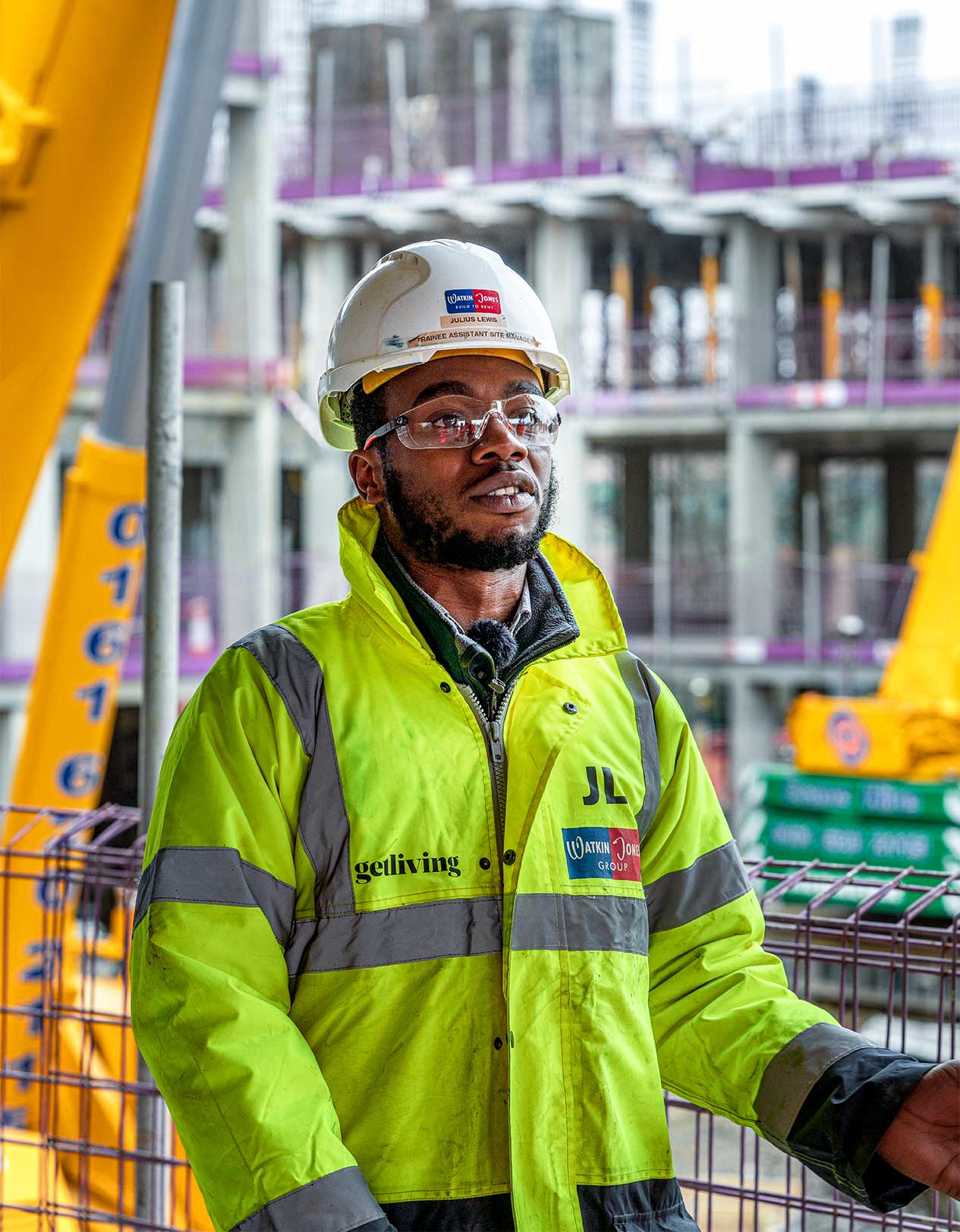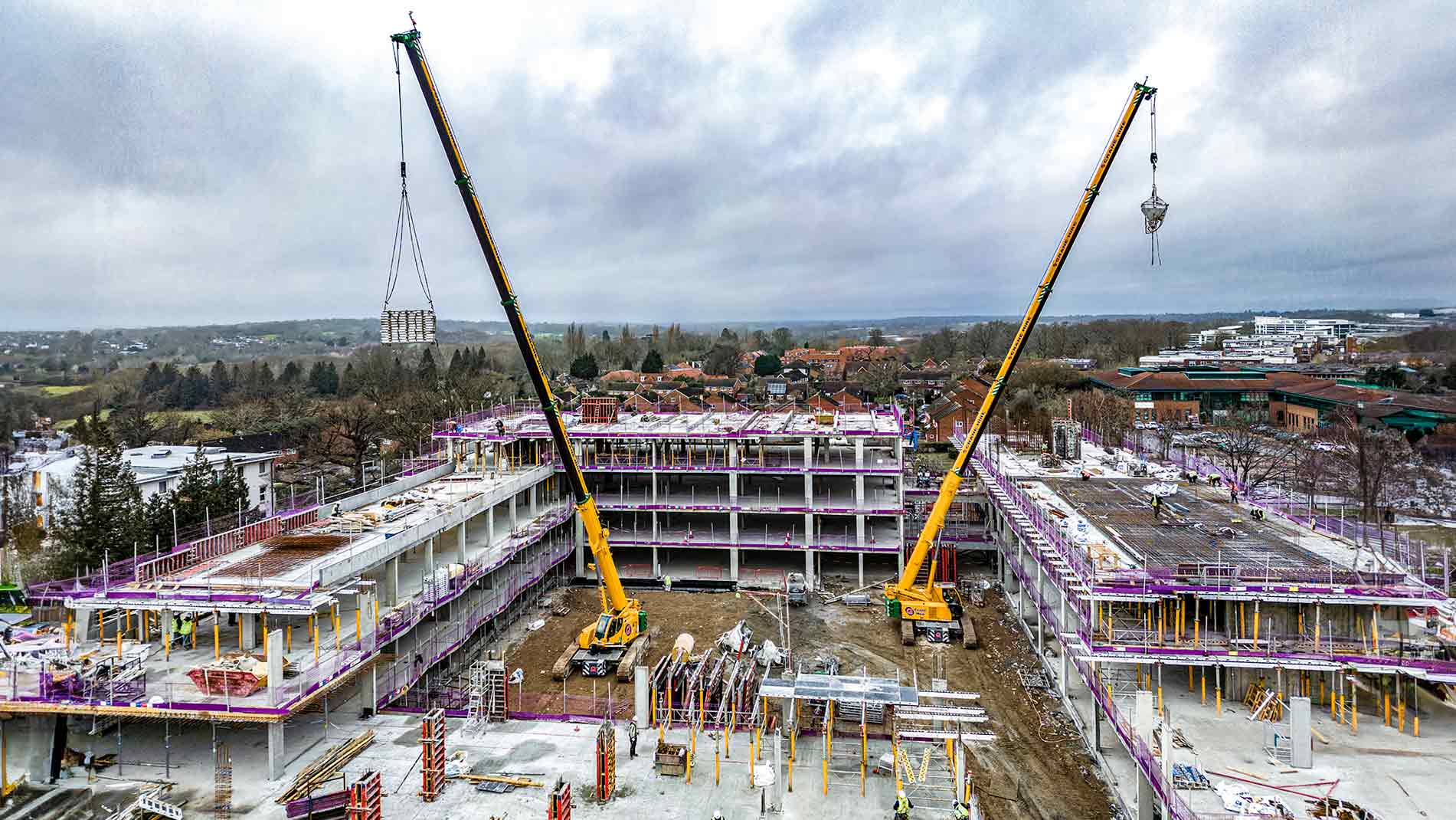You are here
Liebherr Group: Products & Services for PeruTwo LTR 1060s on an unusual mission
Exactly! Not a construction crane in sight. Or at least not a construction crane in the classical sense. Instead, two of our smaller telescopic crawler cranes are at work there. The two Liebherr LTR 1060s are helping to construct a multi-storey residential building. And we were on site taking a closer look at this unusual job.

For Julius Lewis, the Deputy Site Manager, the mobility and the wide range of potential applications are the key attributes of the LTR cranes, which are ensuring rapid progress on his construction project.
Granted, now and again we retouch a photograph to remove a distracting construction crane. In this case, I promise, we did not. In fact, the two Liebherr telescopic boom crawler cranes are constructing the entire building shell in Leatherhead, south west of the British capital, all by themselves. Our business partner, crane contractor Q Crane & Plant Hire Ltd, based in Oldham near Manchester, assigned two of its LTR 1060s to the project for a few months. They have taken on all the jobs usually performed by standard construction cranes. And even more besides – the crawler cranes are also being used at the material storage yard, which is located outside the actual construction site. Truckloads of building materials are delivered and stored there, before being hooked up and driven to where they are needed.
From concrete work to material transport – a crane for all cases
“Itʼs precisely these pick-and-carry tasks that make our LTR cranes so practical and versatile in addition to their hoisting work,” says Eduard Mincu, a crane driver at Q Crane who operates one of the two LTR 1060s. Eduard has been in the crane business for ten years. On this construction site in Leatherhead, he had to travel long distances with his vehicle, especially at the start of the job. “In the beginning, we sometimes had to cover stretches of over a hundred metres with a load on the hook. With the current work in the yard, we often only have to move ten or twenty metres.” Today, Eduard is busy lifting formwork material and precast concrete parts with his machine, while the second tele-crawler on the opposite side provides reliable supplies for concreting. Throughout the day, truck mixers arrive to fill the concrete bucket on the craneʼs hook block near the remaining opening that leads to the new buildingʼs atrium. The LTR 1060 then travels almost to the other end of the inner yard and delivers the material to the steel fixers up top, who are currently building the ceiling of the third floor.

While one LTR 1060 is concreting a floor slab, the second crawler crane has scaffolding elements on its hook. In the background you can see the storage area from which the two cranes transport material to the construction site.
Julius Lewis surveys his fast-growing concrete building with satisfaction. He works for Watkin Jones plc, a large UK construction company that also specialises in residential lettings. Lewis is the deputy site manager for the project in Leatherhead. “Weʼre making pretty good progress with these universal cranes. The dimensions of the area are enormous: we are building 214 flats on four storeys here. Normally, we would have needed two or three tower cranes to reach every part of the entire area without any problems,” he explains. “However, we would have had to erect the construction cranes at a very early stage and wouldnʼt have been able to dismantle them until after the project was completed. The small, mobile crawler cranes offer us greater flexibility, also because they can travel to any location on the site. All the material has to be transported from the storage yard to the construction site. They are absolutely the perfect machines for this job.”

Pretty happy - Crane driver Eduard Mincu
“I love the LTR”
His boss and project manager Ian Kelly takes a similar view. “First and foremost, the LTR 1060s are used due to their high mobility, but also to keep the costs of the crane work under control. The tower cranes that would normally be used would have stood idle for a very long time for logistical reasons. We only need the crawler cranes until the concrete structure is in place. After that, theyʼre gone again.” Kelly plans to continue using this type of crane in the future. “Itʼs the first time Iʼve worked with crawler cranes in this way. However, based on our experience here and their advantages over tower cranes, I would definitely use them again on similar projects.”
Finally, letʼs give Eduard Mincu, our crane driver, his say: “Iʼve worked with many cranes from other manufacturers as well. But the LTR is my clear favourite. The wide range of options via the control programs makes the crane very convenient to operate. Whether for hoisting or transporting materials, this small machine offers superb performance in terms of reach and load capacity. And even on slopes of up to four degrees. Thatʼs really extraordinary, but itʼs also extraordinarily practical,” says Eduard and adds: “I love the LTR.” He laughs heartily at this spontaneous declaration of love.
This article was published in the UpLoad magazine 02 | 2023.




